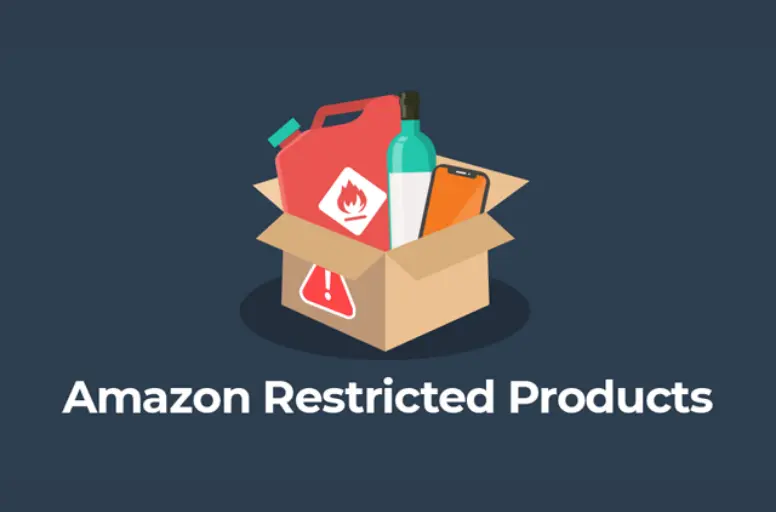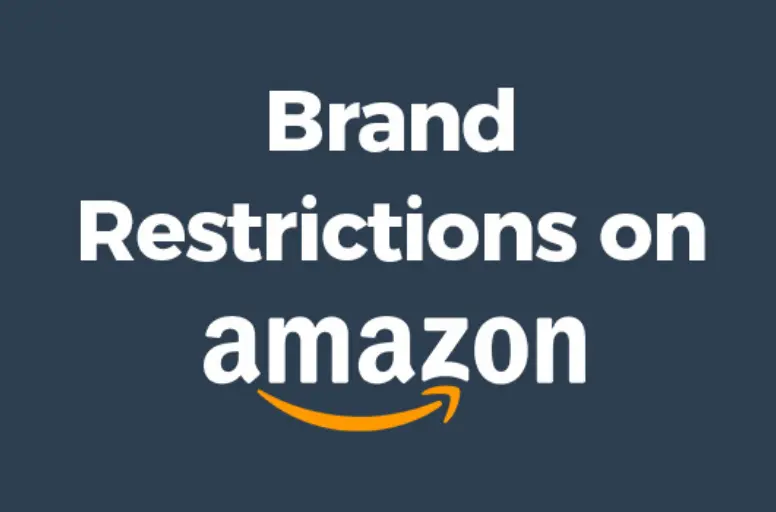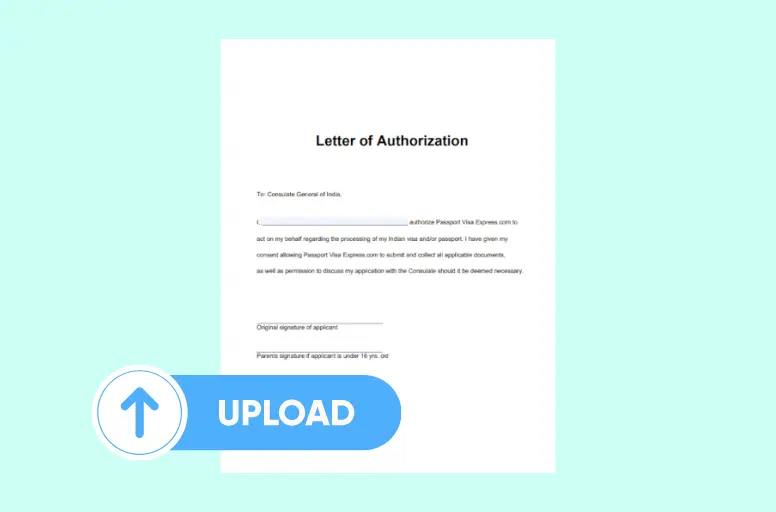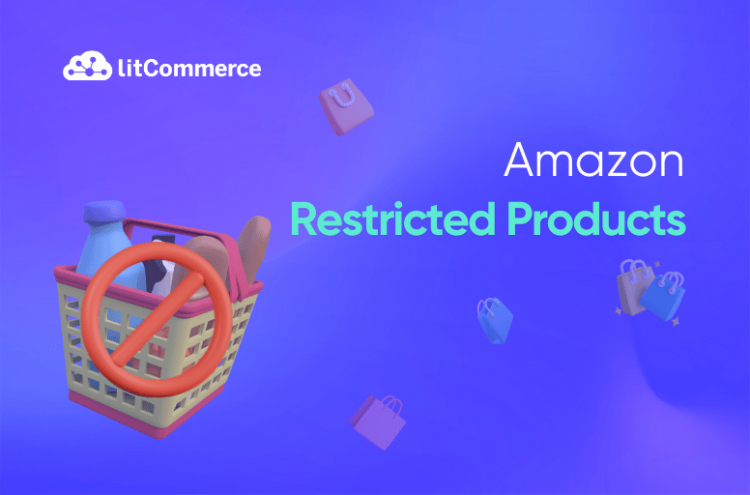Imagine that you’ve put your heart and soul into building your online store on Amazon, carefully curating your product offerings, optimizing your listings, and attracting potential customers. But then, out of nowhere, you encounter a roadblock—a notification stating that one or more of your products fall under the category of “Amazon Restricted Products”
What does this mean? Why is your product now restricted, and how can you navigate this situation effectively?
Worry not! As an Amazon seller, being aware of restricted products is essential to running your business smoothly and responsibly. And we are here to provide all you need to know about Amazon restricted products through the following part:
- What are Amazon restricted products
- List of Amazon restricted categories
- How to avoid selling Amazon restricted products
- How to get permission to sell brands on Amazon
Let’s get started!
What Are Amazon Restricted Products
Amazon restricted products refer to products that sellers cannot list without obtaining approval from Amazon. Such products may encounter legal constraints in specific regions.
Amazon’s product compliance and safety regulations
The main reason for the introduction of restricted products on Amazon is for the platform to commit to its safe and reliable products for customers. The commitment is reflected in its stringent compliance and safety regulations. These regulations enclose a series of guidelines that sellers must follow to list their products on the platform. Some key aspects of these regulations include:
- Product safety standards: Amazon mandates that all products sold on its platform meet relevant safety standards and certifications. This ensures that customers receive products that are free from potential hazards, reducing the risk of accidents and injuries.
- Category-specific requirements: Certain product categories have specific compliance criteria due to their unique nature. For instance, electronics may require certifications to prove compliance with electrical safety standards, while beauty products must adhere to strict ingredient guidelines.
- Labeling and packaging: Sellers must accurately label and package their products, providing clear and correct information to customers. Proper labeling helps customers make informed decisions while promoting transparency and trust.
- Restricted substances: Some products Amazon restricted items due to the use of certain materials and substances that could be harmful to customers or the environment. Therefore, complying with these restrictions ensures the responsible sourcing and manufacturing of products.

Amazon’s ‘Prohibited Product Claims’ policy
Along with product compliance and safety regulations, we want to talk to you about the ‘Prohibited Product Claims’ policy. This is a critical aspect of the restricted products Amazon strategy. So, what’s it all about? Well, this policy specifically targets claims that may mislead or deceive customers regarding the efficacy or safety of a product. By restricting misleading claims, Amazon aims to prevent the sale of items that may pose health risks or deliver false promises to consumers.
To make it a little easier to understand, we give some examples of prohibited product claims, such as those related to miracle cures, unproven health benefits, or guarantees of unrealistic results. For instance, a dietary supplement cannot claim to cure a specific disease or guarantee drastic weight loss without substantial scientific evidence to back such assertions.
But here’s the cool part – this policy is a win-win! Why? By regulating product claims, Amazon strives to protect customers from potential harm, maintain a level playing field for all sellers, and build trust among its user base. This policy not only benefits consumers but also fosters an environment that encourages genuine and responsible businesses to thrive on one of the best selling platforms.
List of Amazon Restricted Categories
What determines a restricted product?
As getting a deep understanding of what Amazon restricted products, it’s time to look for the factors that lead to prohibited products on Amazon. This step is vital for you to gain a good choice for an item in order to sell on Amazon, one of the top marketplaces to sell products. We list the best essential factors below for you to refer to:
- Safety concerns: Of course, this is the leading factor Amazon will check to find Amazon restricted products. Products that may present health hazards or potentially harm consumers are often restricted. This includes items like hazardous materials, flammable substances, and products with sharp edges.
- Legal compliance: As mentioned in the article on how to get ungated on Amazon, Amazon tries its best to adhere to local, national, and international laws and regulations. As an obvious thing, products that violate copyright, trademark, or intellectual property rights may become restricted items on Amazon.
- Age restrictions: Certain products, such as alcohol, tobacco, or adult content, have specific age-related restrictions, and sellers must comply with these regulations if they don’t want a slot in the Amazon restricted brands list.

- Medical and pharmaceutical products: Sellers who have or intend to enter this category note, your items that require specific licenses, certifications, or medical approval can be on Amazon restricted product list to ensure proper handling and distribution.
- Perishable or temperature-sensitive goods: You know, Amazon don’t want their brand to get a bad reputation due to faulty products delivered to customers. And you may have the same thought. As a result, products that require strict temperature control or have limited shelf life can be on Amazon restricted products list to maintain product quality and safety.
What are restricted products on Amazon
We come to the most important part of this article and probably the part that interests most people: what are Amazon restricted products? The list of products restricted on Amazon is really long, with many items on the list of best products to sell on Amazon. So, you should carefully pay attention to ensure you have a good strategy for your Amazon shop.
Here’s the list of Amazon restricted categories:
Besides, there are several items that aren’t included on Amazon’s current list of restricted products, they still have restrictions as well:
- Ink and toner cartridges
- Software
- Textbooks

Additionally, your product may become a part of restricted categories on Amazon in some cases followed:
- A category necessitates prior approval from Amazon before you can list your items under it.
- You must furnish extra details and/or an additional assurance before being able to list in a category.
- Products are asserted to be “FDA Cleared” or “FDA approved” (including those that exhibit the FDA logo in their listing images).
However, the above are not all about Amazon restricted products. So, what other conditions do we need to consider for a limited product? As we mentioned in the previous section, legal compliance is the factor determining Amazon restricted products. That’s why, when internationally operating a shop activity in a certain Amazon marketplace, you’re responsible for knowing and complying with a country’s laws and regulations. By doing that, you can avoid your items becoming illegal things on Amazon.
How to Avoid Selling Amazon Restricted Products
Knowing obviously about the list of Amazon restricted products isn’t enough for your eCommerce business. Let’s show you the next stage that relates to how to navigate Amazon’s restrictions. This navigation collapsing with our sell on Amazon guide is the double key to ensuring your business stays compliant as well as thrives on the platform. Here’s the construction in terms of avoiding Amazon restricted brands for you:
1. Utilize Amazon restricted products list
To ensure you don’t accidentally sell restricted items on Amazon, it’s crucial to always keep the Amazon restricted products list in your eyes. This list contains items with specific requirements or completely prohibited from being sold. You ought to make it a habit to regularly check and cross-reference your products with this list to stay compliant. Remember, Amazon updates this list from time to time, so staying informed and adjusting your inventory accordingly is essential.
2. Understand Amazon FBA restricted products
For those using Amazon’s FBA (Fulfillment by Amazon) service, it’s essential to be aware of their specific set of Amazon FBA restricted products. While some items may overlap with the general restricted list, additional products might be prohibited within the FBA program. So, we recommend you take the time to thoroughly review the FBA guidelines and double-check your inventory before sending it to Amazon’s fulfillment centers.

3. Verify product listings (restricted keywords, descriptions, and images)
To keep your business on the right track and avoid penalties due to Amazon restricted products, carefully reviewing your product listings for any potential violations is essential. You need to pay close attention to restricted keywords that could raise flags with Amazon’s algorithm. Also, as an intelligent seller, you should ensure that your product descriptions and images are accurate and compliant with the guidelines. Keeping an eye on customer reviews and feedback is valuable, too, as they might point out any prohibited items, allowing you to take quick corrective action if needed.
4. Adhere to Amazon’s policies
One of the most critical aspects of avoiding selling Amazon restricted products is strictly adhering to Amazon’s policies. It is vital to familiarize yourself with the seller’s code of conduct and policies, covering everything from product descriptions to customer service. Moreover, you ought to stay updated on any policy changes, as ignorance is not an excuse for non-compliance. Moreover, maintaining transparent and proactive communication with Amazon’s support team is also good if you have any questions or concerns about your product’s eligibility.
How to Get Permission to Sell Brands on Amazon
Actually, it is not easy to gain permission to sell a brand on Amazon. But your worry is unnecessary, as we are here to support you. In this section, we perform a detailed guide on how to get permission to sell brands on Amazon:
1. Determine brand restrictions
Some brands have strict policies regarding who can sell their products on Amazon. Before you proceed, it is important to check if the brand you want to sell requires specific permissions or has brand gating (restricted access) in place. You can find this information in Amazon’s Seller Central or by reaching out to Amazon support.

2. Contact the brand owner or manufacturer
If the brand owner has a Brand Registry on Amazon, you can try to contact them directly through Amazon’s Brand Registry portal. Alternatively, you can contact the brand owner or manufacturer through their official website or customer service channels.
3. Request authorization
In your communication with the brand owner, you need to explain your business, your intention to sell their products on Amazon, and why you would be a valuable reseller for them. Hence, we suggest you highlight any relevant experience, sales volume, or market reach you may have. You can provide evidence of this if you are an authorized distributor or retailer of the brand’s products.
4. Obtain a letter of authorization
Some brand owners may require you to provide a letter of authorization as proof of your permission to sell their products on Amazon. This letter should be on the brand owner’s official letterhead and include specific details such as your company name, the brand’s products you are authorized to sell, and any other relevant terms or restrictions.
5. Enroll in Amazon’s Brand Registry (if applicable)
Amazon Brand Registry is a program that allows brand owners to protect their registered trademarks and control the product listings associated with their brands. If you’re approved as an authorized seller, the brand owner may require you to enroll in their Brand Registry program to ensure that your listings are accurate and compliant with their branding guidelines.
6. Upload the authorization documents
If required, you submit the letter of authorization or any other documents as requested by the brand owner through Amazon’s Seller Central. This is usually done in the Brand Registry section or through the “Add a Product” process.

7. Comply with brand guidelines
Once authorized, you should make sure to follow the brand’s guidelines for selling their products. This may include using approved product images and descriptions, adhering to pricing policies, Amazon seller fees policies, and avoiding any violations that could lead to your selling privileges being revoked.
Significantly, be patient and persistent in your communication with the brand owner, and always adhere to Amazon’s policies to maintain good standing as a seller on the platform.
Amazon Restricted Products – FAQs
- What are the restricted products on Amazon?
Here’re the list of Amazon restricted categories:
- Alcohol
- Animals & products related to animals
- Fine art
- Home decor art
- Automotive and powersports items
- Products made of composite wood
- Cosmetics & skin/Hair care products
- Currency, coins, cash equivalents, and gift cards
- Dietary Supplements
- Drugs & items associated with drug use
- Electronic devices
- Explosives, weapons, and similar items
- Products subject to export controls
- Food & beverage products
- Gambling & lottery-related items
- Hazardous and dangerous items
- Human parts & artifacts related to burial
- Jewelry & precious gems
- Laser products
- Lighting equipment
- Lock picking tools & theft devices
- Medical devices and accessories
- Offensive and controversial materials
- Pesticides and devices for pesticide application
- Plant and seed products
- Postage meters & stamps
- Recalled products
- Recycling electronics
- Subscriptions and periodicals
- Surveillance equipment
- Tobacco & tobacco-related products
- Warranties, service plans, contracts, and guarantees
- Other restricted products
- Refrigerants: Ozone-depleting substances and substitutes
This is not an exhaustive list, and the restrictions may vary by country or region. It’s advisable to review Amazon’s policies and guidelines regularly to ensure compliance with their rules and regulations.
- How do I find out if a product is restricted on Amazon?
To find out if a product is restricted on Amazon, you can try adding the product in Amazon Seller Central. If it is gated, you can click the ‘Show Limitations’ button to see the restrictions. Additionally, sellers can review Amazon’s policies and guidelines regularly to ensure compliance with their rules and regulations. There are also third-party tools available that can help you to quickly see if a product is restricted or requires approval to sell on Amazon.
- How do I know if an item is gated?
To know if an item is gated on Amazon, you can try adding the product to your Amazon Seller Central Account. If it is gated, Amazon will show a message stating that the product or category requires approval. Besides, you can also use third-party tools such as Stratify, Scoutify, and ScoutX to set up Product Alerts that will notify you when you are restricted from selling an item. Additionally, some Amazon sellers use the Amazon Seller App to check if a product or category is gated. Amazon’s policies and guidelines change constantly, so it is important to keep up to date by regularly reviewing their rules and regulations.
Stay Away and Be Aware of Amazon Restricted Products
You’ve made it to the end of our discussion on Amazon-restricted products! We hope this exploration has left you feeling empowered and well-equipped to tackle any challenges that may come your way. Remember, being a successful Amazon seller is not just about offering fantastic products; it’s also about being responsible stewards of the marketplace. By understanding and complying with Amazon’s restrictions, you demonstrate a genuine dedication to the safety and satisfaction of your customers, which will undoubtedly set you apart from the crowd.
Additionally, if you look out for something that can help your Amazon selling journey become easier, feel free to explore the LitCommerce Amazon integration. If you require additional guidance or advice, don’t hesitate to contact us anytime through our 24/7 live chat, where our team of real people will be more than happy to assist you.
And that’s not all! The LitCommerce team is also working on creating a dedicated Retailers Blog and Facebook community exclusively for online merchants like yourself. You’ll stay up-to-date with the latest eCommerce updates and valuable insights by joining. We can’t wait to have you as part of our vibrant community!



